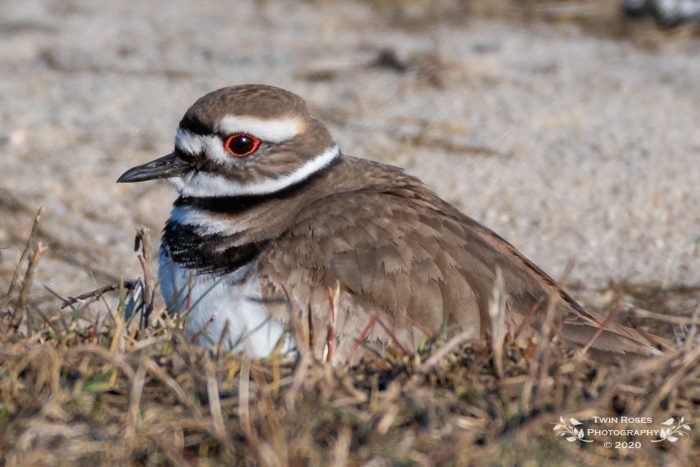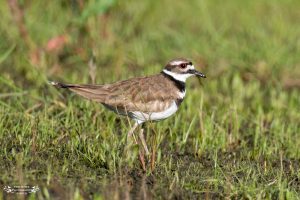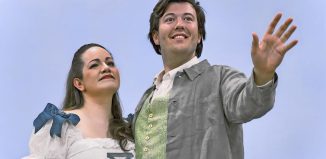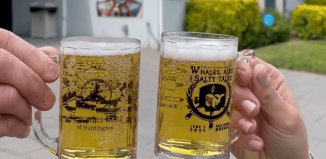Cayla’s Column: Killdeer need your help!

By Cayla Rosenhagen

The Killdeer is a large, migratory plover that tends to nest in odd places around Long Island, such as school ballfields, golf courses, grass strips next to shopping malls, and even in parking lots!
These locations are heavily trafficked by people and therefore extremely hazardous to the parent birds and their eggs or chicks. Frequently, Killdeer eggs are unintentionally run over by lawnmowers, cars, or trampled by human feet.
However, this doesn’t have to happen. With the help of the Four Harbors Audubon Society’s newly-launched Killdeer Protection Program, you can contribute to a Killdeer success story!
First, where, and how can you spot a Killdeer; and secondly, how would you know it’s in trouble?
Keep an eye out for Killdeer here from mid-March to August, their breeding season. The Killdeer we see journeyed from their winter foraging grounds in Central and South America to build nests and raise their chicks here. These birds will spend most of their time on the ground in grassy areas laden with their favorite foods, like worms, grasshoppers, and other insects.
Unlike other plover species, Killdeer do not necessarily live by the water, and so you may frequently spot them inland. Both males and females are about the size of a blue jay, sporting mostly brown and white feathers with two distinctive black bands on their breast. Listen to them closely, and you may hear their high-pitched namesake call: “Kill-deer!”

Like other shorebirds, Killdeer nests are shallow depressions in the ground called “scrapes.” Here, they lay 4 to 6 eggs per clutch, twice in the season. The tan and brown speckled eggs are well-camouflaged and can easily be mistaken for rocks. Although this camouflage adaptation helps hide the eggs from predators such as crows and raccoons, it also makes it difficult for people to notice them, or to avoid interfering with the nest site.
What should you do if you find a nest in danger?
If you happen upon a nest, you are likely to see one of the Killdeer parents feigning a broken wing, luring you further and further away from the nest and its eggs. This “broken-wing dance” is a clear sign you have approached a Killdeer nest too closely. Make a note of the location, place a marker nearby if possible, and reach out as soon as possible to the 4HAS’s Killdeer Protection Program by email: [email protected].
Do not attempt to move the nest yourself. Since the Killdeer is a native migratory bird species, it is protected under the Migratory Bird Treaty Act. It is, therefore, illegal to disrupt the active nest in any way without a permit.
The members and volunteers of the 4HAS Killdeer Protection Program will work fast to make sure the nest is secured by roping it off, by bringing awareness to the site via signs and colorful pylons, and by making contact with the landowners for access. Once the Killdeer chicks fledge or become independent from their parents, members of the program will remove the barriers from the location.
For more information about this remarkable bird, visit https://www.allaboutbirds.org/guide/Killdeer. Thank you for looking after our feathered friends in need!
Thank you so much to my fellow Killdeer Protection Program team members Elaine Maas, Patrice Domeischel, and Georgia Turner for their contributions to this article.
Cayla Rosenhagen is a local high school student who enjoys capturing the unique charm of the community through photography and journalism. She serves on the board of directors for the Four Harbors Audubon Society and Brookhaven’s Youth Board, and is the founder and coordinator of Beach Bucket Brigade, a community outreach program dedicated to environmental awareness, engagement, and education. She is also an avid birder, hiker, and artist who is concurrently enrolled in college.






